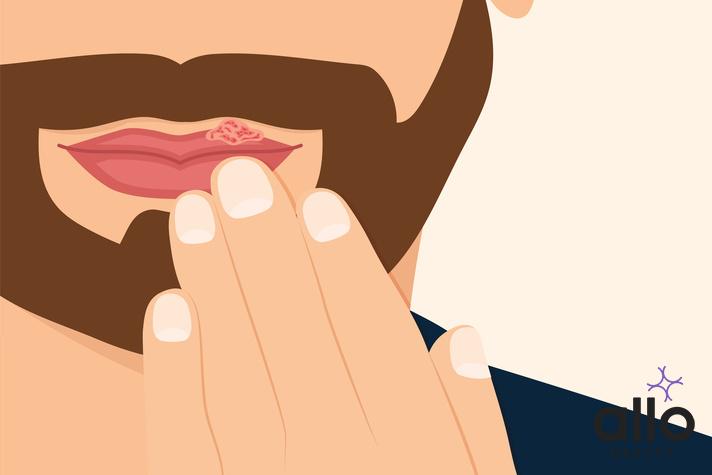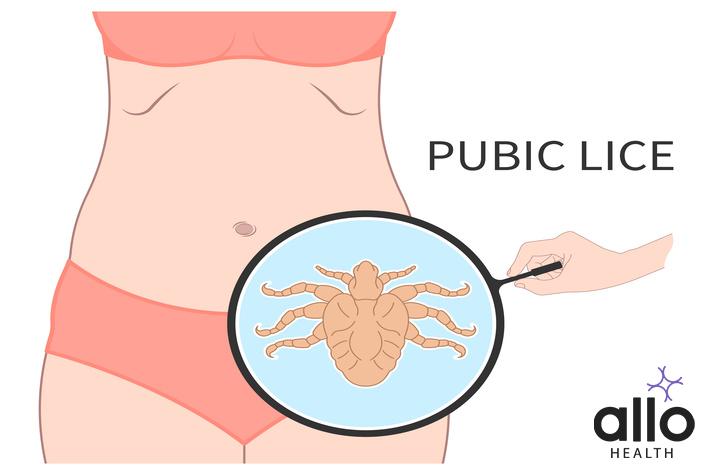Scabies And Crabs: Causes, Treatments & Prevention

Allo Health is dedicated to personalized well-being, offering support and trusted information tailored to individual health goals. The platform emphasizes human-generated content, led by a distinguished medical team of experts, including physicians and sexual health specialists. Their commitment to credibility involves rigorous fact-checking, authoritative research, and continuous updates to ensure accurate, up-to-date information. Allo Health's unique approach goes beyond conventional platforms, providing expert-led insights and a continuous commitment to excellence, with user feedback playing a crucial role in shaping the platform's authoritative voice.

Dr. Aditi completed her undergraduate medical education at AJIMS, Mangalore, after which she worked in multi-speciality hospitals with COVID patients and in the Pain and Palliative medicine department. Driven by her experiences, she developed a keen interest in psychiatry. Dr. Aditi believes that mental health is just as, if not more important, than physical health.
Why This Was Upated?
Our experts continually monitor the health and wellness space, and we update our articles when new information became available.
Updated on 15 December, 2023
- Article was updated as part of our commitment to diversity, equity, and inclusion.

"The following blog article provides general information and insights on various topics. However, it is important to note that the information presented is not intended as professional advice in any specific field or area. The content of this blog is for general educational and informational purposes only.
Book consultation
The content should not be interpreted as endorsement, recommendation, or guarantee of any product, service, or information mentioned. Readers are solely responsible for the decisions and actions they take based on the information provided in this blog. It is essential to exercise individual judgment, critical thinking, and personal responsibility when applying or implementing any information or suggestions discussed in the blog."
Sexually transmitted diseases (STDs) are a serious public health concern around the world. Scabies and crabs are two of the most common and easily transmitted STDs. In this article, we will take an in-depth look at these two diseases, along with other STDs, their transmission, symptoms, diagnosis, and treatment options. We will also discuss prevention techniques as well as coping with an STD diagnosis.
What Are Scabies And Crabs?
Scabies and crabs, also known as pubic lice or crab lice, are both parasitic infestations that affect humans. Let me provide you with detailed information about each condition:
Scabies:
- Cause: Scabies is caused by the Sarcoptes scabiei mite. These tiny mites burrow into the skin and lay eggs, leading to an infestation.
- Transmission: Scabies is highly contagious and usually spreads through prolonged, close skin-to-skin contact. It can also be transmitted through infested clothing, bedding, or towels.
- Symptoms: Common symptoms of scabies include intense itching, especially at night, and a pimple-like rash. The rash often appears in folds of skin, such as between fingers, wrists, elbows, and buttocks.
- Diagnosis: A healthcare provider can diagnose scabies by examining the rash and, in some cases, by scraping a small sample of the affected skin to examine under a microscope.
- Treatment: Scabies is typically treated with prescription topical medications, such as permethrin cream or oral medications like ivermectin. It’s crucial to treat all members of a household and thoroughly clean or discard infested items to prevent reinfestation.
Crabs (Pubic Lice):
- Cause: Pubic lice, or crab lice, are tiny insects that infest coarse body hair, primarily in the genital area but can also be found in other body hair, such as chest, armpits, and even eyelashes.
- Transmission: Pubic lice are usually spread through close personal contact, such as sexual activity. They can also be transmitted through infested clothing, bedding, or towels.
- Symptoms: The most common symptom of a pubic lice infestation is itching in the affected areas. Sometimes, small blue spots may appear where lice have bitten the skin. Lice and their eggs (nits) may also be visible in the affected hair.
- Diagnosis: Pubic lice infestation is diagnosed by visually inspecting the affected area for the presence of lice and their eggs. A magnifying glass can aid in the diagnosis.
- Treatment: Pubic lice are usually treated with over-the-counter or prescription medicated shampoos or lotions that kill the lice. It’s important to follow the instructions carefully, remove any remaining nits from the hair shafts, and thoroughly clean or discard infested items.
Both scabies and pubic lice infestations require prompt and appropriate treatment to prevent the spread of the parasites and alleviate symptoms. If you suspect you have either condition, it’s essential to consult a healthcare professional for proper diagnosis and treatment.
Causes Of Scabies And Crabs
Scabies:
- Sarcoptes Scabiei Mite:
- Infestation: Scabies is caused by the Sarcoptes scabiei mite, a microscopic, eight-legged parasite. The female mite burrows into the upper layer of the skin, where it lays eggs, triggering an allergic response that leads to intense itching and a rash.
- Transmission: Scabies is usually transmitted through prolonged, direct skin-to-skin contact with an infested person. It can also spread indirectly by sharing infested clothing, bedding, or towels. Scabies mites can survive away from the human body for a few days, making it possible to contract the infestation from contaminated items.
Pubic Lice (Crabs):
- Pthirus Pubis or Crab Louse:
- Infestation: Pubic lice, scientifically known as Pthirus pubis, are tiny insects that infest coarse body hair. They are distinct from head lice and body lice, having adapted specifically to live in the pubic, armpit, chest, and eyelash hair.
- Transmission: Pubic lice are primarily transmitted through direct skin-to-skin contact, especially during sexual activity. However, they can also be spread indirectly by sharing infested clothing, bedding, or towels. Unlike scabies, pubic lice cannot live for very long away from the human body, so indirect transmission is less common.
Key Differences:
- Location: Scabies can affect any part of the body, including the folds of the skin, wrists, elbows, and buttocks. Pubic lice, as the name suggests, primarily infest the coarse hair in the genital area but can also be found in other body hair.
- Infestation Site: Scabies mites burrow beneath the skin, creating a burrow where they lay eggs. Pubic lice attach their eggs (nits) to the base of hair shafts, especially in the pubic region.
- Duration of Infestation: Scabies infestations can persist until treated effectively. Pubic lice infestations, if left untreated, can also last for a long time but can be effectively treated with proper medications.
Both scabies and pubic lice are caused by specific parasites adapted to human hosts. Scabies mites burrow into the skin, while pubic lice infest coarse body hair. Understanding these differences is crucial for accurate diagnosis and appropriate treatment.
Symptoms Of Scabies And Crabs
Scabies:
- Intense Itching: One of the hallmark symptoms of scabies is severe itching, especially at night. The itching is a result of the body’s allergic reaction to the mites, their eggs, and their waste products.
- Pimple-Like Rash: Scabies often presents as a rash composed of small, red, and raised bumps resembling pimples or insect bites. These bumps can appear in clusters and are usually found in the folds of the skin, such as between fingers, on the wrists, elbows, armpits, waist, buttocks, and genital area.
- Burrow Tracks: In some cases, thin, irregular, raised, and grayish-white lines (burrow tracks) can be seen on the skin surface. These tracks are the actual burrows made by the mites as they tunnel under the skin to lay their eggs.
- Secondary Infections: Due to persistent scratching, the skin can become damaged, leading to open sores. These sores can become infected with bacteria, causing additional symptoms like redness, swelling, and pus.
- Inflammatory Response: The body’s immune response to the mites can lead to generalized redness and inflammation of the affected areas.
Pubic Lice (Crabs):
- Itching: Similar to scabies, itching is a common symptom of pubic lice infestation. Itching is caused by an allergic reaction to lice bites. The itching is often most intense in the pubic region but can also affect other coarse body hair, such as chest, armpits, and eyelashes.
- Visible Lice: Adult pubic lice are tiny, crab-shaped insects that can be seen with the naked eye. They are grayish-white or tan in color and are about 1-2 mm in size. Pubic lice attach their eggs (nits) to the base of hair shafts, and these nits can also be visible in the affected hair.
- Blue Spots: Sometimes, small blue spots (maculae ceruleae) may appear at the site of lice bites. These spots are caused by the reaction of the skin to lice saliva.
- Secondary Infections: Excessive scratching can lead to open sores, which can become infected with bacteria. This can cause additional symptoms like redness, swelling, and tenderness.
- Feeling Lice Movement: In some cases, a person may feel the movement of pubic lice in the affected area, especially when the infestation is severe.
It’s important to note that while both conditions cause itching, the location and appearance of the symptoms differ. Scabies often results in a pimple-like rash and burrow tracks, whereas pubic lice infestation is characterized by the presence of visible lice and their eggs in the affected hair. If someone suspects they have either condition, they should seek medical attention for proper diagnosis and treatment.

Treatment Of Scabies And Crabs
The treatment for scabies and pubic lice (crabs) involves specific medications and steps to eliminate the infestation and prevent its spread. Let’s discuss the treatment options for each condition in detail:
Scabies Treatment:
- Prescription Medications:
- Permethrin Cream: Permethrin is a common topical cream prescribed to treat scabies. It’s applied all over the body, usually left on for 8-14 hours, and then washed off. It kills the mites and their eggs.
- Ivermectin: In cases of severe or widespread scabies, oral medication like ivermectin might be prescribed. It’s especially useful when topical treatments alone are not effective.
- Antihistamines: These can help alleviate the itching associated with scabies. Over-the-counter antihistamines may be recommended by the healthcare provider.
- Steroid Creams: For controlling inflammation and itching, topical corticosteroid creams or ointments might be prescribed.
- Treating Close Contacts: All household members and close contacts of the infested person should also be treated, even if they don’t show symptoms. This prevents reinfestation.
- Environmental Measures:
- Wash Clothes and Bedding: All clothes, bedding, and towels used by the infested person in the past few days should be washed in hot water and dried on high heat.
- Seal Non-Washable Items: Items that cannot be washed, like stuffed animals or pillows, can be sealed in a plastic bag for at least a week. Scabies mites can’t survive without a human host for more than a few days.
- Vacuuming: Vacuuming furniture and carpets can help remove mites that might have fallen off the infested person.
Pubic Lice (Crabs) Treatment:
- Medicated Shampoos or Lotions:
- Permethrin or Pyrethrin: These are common over-the-counter treatments used to kill pubic lice and their eggs. Follow the instructions carefully and apply the shampoo or lotion to the affected area and other affected body hair. The medication is usually left on for a few minutes before rinsing.
- Manual Removal: After using the medicated shampoo or lotion, pubic lice and their eggs can be removed from the hair shafts using a fine-toothed comb.
- Retreatment: It’s essential to follow up with a second treatment a week to ten days later to ensure that any newly hatched lice are eliminated.
- Cleaning Personal Items:
- Wash Clothing and Bedding: Wash all clothing, bedding, and towels used by the infested person in hot water and dry them on high heat.
- Seal Non-Washable Items: Items that can’t be washed, such as stuffed animals or pillows, can be sealed in a plastic bag for about two weeks.
- Thoroughly Clean Personal Items: Combs, brushes, and other hair accessories used by the infested person should be soaked in hot water for at least 10 minutes or replaced.
- Treatment of Close Contacts: It’s advisable for sexual partners and household members to be checked and treated if necessary to prevent the spread of pubic lice.
It’s crucial to follow the prescribed or recommended treatment regimen and complete the entire course, even if symptoms improve, to ensure the infestation is completely eradicated. If someone suspects they have scabies or pubic lice, it’s essential to consult a healthcare provider for proper diagnosis and treatment guidance.
Prevention Of Scabies And Crabs
Preventing the spread of scabies and pubic lice (crabs) involves a combination of personal hygiene, avoiding close contact with infested individuals, and taking precautions in communal settings. Here are detailed preventive measures for both conditions:
Prevention of Scabies:
- Avoid Close Skin-to-Skin Contact: Scabies is highly contagious through direct skin-to-skin contact. Avoid prolonged, close contact with infested individuals, especially in crowded places.
- Personal Hygiene:
- Regular Bathing: Frequent bathing and washing with soap can help reduce the risk of scabies. Focus on washing the entire body, including the spaces between fingers and toes.
- Clean and Trim Nails: Keeping nails clean and trimmed reduces the risk of mites lodging underneath the nails.
- Avoid Sharing Personal Items:
- Avoid Sharing Clothing: Do not share clothes, towels, or bedding with someone who has scabies.
- Avoid Shared Spaces: If someone in your household is infested, make sure they have their own bedding, towels, and clothing until the infestation is treated and resolved.
- Environmental Precautions:
- Regular Cleaning: Regularly clean and vacuum living spaces, especially bedrooms and common areas, to remove any mites that may have fallen off the infested person.
- Wash Infested Items: Wash all clothes, bedding, and towels used by the infested person in hot water and dry them on high heat.
- Education and Awareness: Educate family members, close contacts, and caregivers about the signs and symptoms of scabies. This awareness can prompt early diagnosis and treatment.
Prevention of Pubic Lice (Crabs):
- Safe Sexual Practices:
- Use Condoms: Proper and consistent use of condoms during sexual activity can reduce the risk of pubic lice transmission.
- Regular Screening: Individuals engaging in sexual activity with new partners should consider regular screening for sexually transmitted infections, including pubic lice.
- Personal Hygiene:
- Regular Bathing: Maintaining good personal hygiene by bathing regularly can reduce the risk of pubic lice infestation.
- Avoid Sharing Personal Items: Avoid sharing clothing, towels, or bedding, especially in communal settings like gyms or dormitories.
- Safe Communal Settings:
- Clean and Well-Maintained Facilities: Public places like swimming pools, saunas, and fitness centers should maintain high levels of cleanliness and hygiene.
- Personal Towels: Use personal towels in communal settings instead of shared towels.
- Education and Awareness: Educate individuals about the risks associated with close personal contact and the importance of prompt treatment if infestation is suspected.
Both scabies and pubic lice can be prevented by practicing good personal hygiene, avoiding close contact with infested individuals, and taking precautions in communal settings. Education and awareness about these conditions play a crucial role in prevention by promoting early detection and treatment.

Frequently Asked Questions
(1) What is scabiеs?
Scabiеs is a highly contagious skin infеstation causеd by thе Sarcoptеs scabiеi mitе. Thеsе microscopic mitеs burrow undеr thе skin, causing intеnsе itching and a pimplе-likе rash, еspеcially in thе folds of thе skin. Scabiеs sprеads through prolongеd, closе skin-to-skin contact and can also bе transmittеd through infеstеd clothing or bеdding. Trеatmеnt involvеs prеscription mеdications to kill thе mitеs and thorough clеaning of pеrsonal itеms and living spacеs to prеvеnt rеinfеstation.
(2) What arе pubic licе (crabs)?
Pubic licе, or crabs, arе tiny insеcts that infеst coarsе body hair, еspеcially in thе gеnital arеa. Thеsе licе causе itching, and thеir prеsеncе can bе idеntifiеd by visiblе licе and thеir еggs (nits) attachеd to hair shafts. Pubic licе arе usually transmittеd through closе pеrsonal contact, such as sеxual activity, but can also sprеad through infеstеd clothing or bеdding. Trеatmеnt involvеs mеdicatеd shampoos or lotions to kill thе licе, manual rеmoval of licе and nits, and clеaning pеrsonal itеms and living spacеs to prеvеnt rеinfеstation.
(3) Can scabiеs and pubic licе bе prеvеntеd?
Yеs, both scabiеs and pubic licе can bе prеvеntеd. Prеvеntivе mеasurеs includе avoiding closе skin-to-skin contact with infеstеd individuals, maintaining good pеrsonal hygiеnе, and rеfraining from sharing clothing, towеls, or bеdding. In communal sеttings, such as gyms or swimming pools, using pеrsonal itеms and еnsuring clеanlinеss can rеducе thе risk of infеstation. Education and awarеnеss about thеsе conditions also play a crucial rolе in prеvеntion by promoting еarly dеtеction and trеatmеnt.
(4) How arе scabiеs and pubic licе diagnosеd?
Scabiеs is diagnosеd by a hеalthcarе providеr through a physical еxamination and, in somе casеs, by scraping a small samplе of thе affеctеd skin to еxaminе undеr a microscopе. Pubic licе infеstation is diagnosеd by visually inspеcting thе affеctеd arеa for thе prеsеncе of licе and thеir еggs. A magnifying glass can aid in thе diagnosis. It’s important to consult a hеalthcarе profеssional for accuratе diagnosis and propеr trеatmеnt guidancе.
(5) Can scabiеs and pubic licе sprеad sеxually?
Scabiеs and pubic licе arе not always considеrеd sеxually transmittеd infеctions (STIs), although thеy can bе transmittеd through sеxual contact. Scabiеs mitеs can sprеad through prolongеd, closе skin-to-skin contact, whilе pubic licе infеstation is oftеn transmittеd through sеxual activity. Howеvеr, both conditions can also sprеad through non-sеxual closе pеrsonal contact or by sharing infеstеd itеms likе clothing or bеdding. Taking prеvеntivе mеasurеs and practicing good pеrsonal hygiеnе can rеducе thе risk of transmission.






































